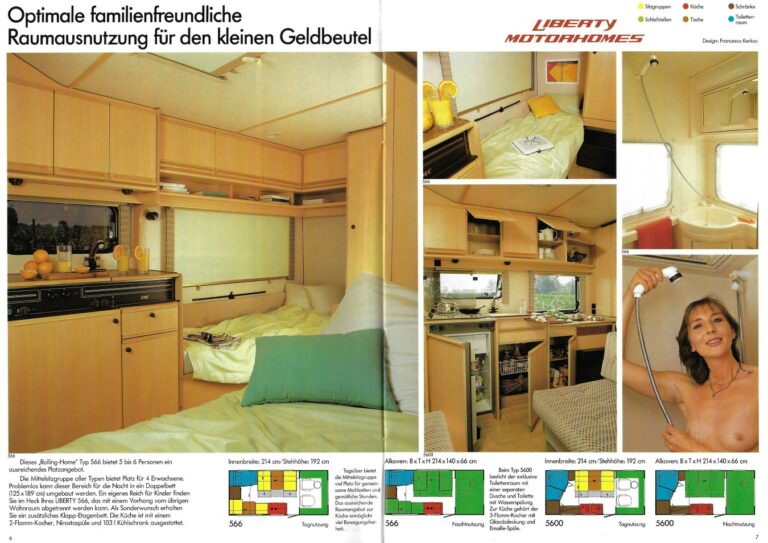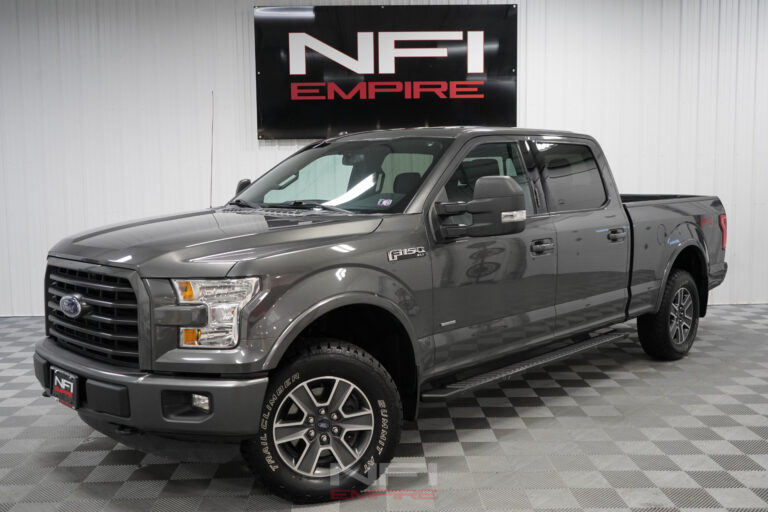Small Crane Trucks For Sale: Your Comprehensive Guide to Lifting Solutions on Wheels
Small Crane Trucks For Sale: Your Comprehensive Guide to Lifting Solutions on Wheels cars.truckstrend.com
In the fast-paced world of construction, logistics, and field services, efficiency and versatility are paramount. Traditional large cranes are indispensable for monumental tasks, but their size, cost, and limited maneuverability can be a hindrance for smaller, more agile operations. This is where small crane trucks emerge as an indispensable asset. These compact powerhouses combine the utility of a flatbed or service truck with the lifting capabilities of a crane, offering an unparalleled blend of mobility and strength. Whether you’re a contractor needing to lift materials on a tight urban job site, a utility company replacing poles, or a landscaper moving heavy rocks, a small crane truck can revolutionize your workflow, saving time, labor, and ultimately, money. This comprehensive guide will delve into everything you need to know about small crane trucks for sale, helping you make an informed decision for your business needs.
Small Crane Trucks For Sale: Your Comprehensive Guide to Lifting Solutions on Wheels
The Versatility of Small Crane Trucks: Power in a Compact Package
Small crane trucks, often mounted on light to medium-duty truck chassis, are designed for tasks that require lifting and transporting moderate loads in diverse environments. Their defining characteristic is their ability to access areas where larger, dedicated cranes simply cannot go – navigating narrow streets, low overhead clearances, or congested construction sites.
Key Industries Benefiting:
- Construction: Lifting beams, trusses, HVAC units, roofing materials, and smaller pre-fabricated components.
- Landscaping & Arboriculture: Moving large rocks, trees, boulders, and logs.
- Utilities: Installing and repairing utility poles, transformers, and streetlights.
- Signage & Advertising: Erecting and maintaining billboards and large signs.
- Material Handling: Loading and unloading equipment, machinery, and pallets at warehouses or delivery points.
- Field Service & Maintenance: Deploying tools and parts directly to remote job sites.
- Scrap & Recycling: Loading metal scraps and other recyclable materials.

Advantages Over Alternatives:

- Mobility: Drive directly to the job site, set up quickly, and move to the next task.
- Cost-Effectiveness: Lower initial investment, operating costs, and maintenance compared to full-sized cranes.
- Reduced Labor: Minimizes the need for manual lifting, reducing injury risks and increasing productivity.
- Increased Efficiency: Combines transportation and lifting into one vehicle, streamlining operations.
- Versatility: Adaptable to a wide range of tasks and industries.

Key Features and Components to Look For
Understanding the core components of a small crane truck is crucial for selecting the right model for your specific applications.
-
Crane Type:
- Articulating (Knuckle Boom) Cranes: These cranes have multiple joints, allowing them to fold into a compact size when not in use and maneuver around obstacles with precision. They are excellent for tight spaces and complex lifting scenarios, offering superior articulation and reach into difficult areas.
- Telescopic (Stiff Boom) Cranes: Featuring a straight, extendable boom, these cranes are simpler in design and often offer higher lifting capacities and greater horizontal reach for their size. They are ideal for direct lifting tasks where precision articulation isn’t the primary concern.
-
Lifting Capacity and Reach: Measured in tons or pounds, this indicates the maximum weight the crane can lift. Reach refers to the maximum horizontal and vertical distance the boom can extend. Always consider your heaviest anticipated load and the furthest reach required for your typical tasks.
-
Truck Chassis Type: Small crane trucks are typically mounted on Class 3-7 chassis (e.g., Ford F-Series, Ram, Isuzu, Hino, Freightliner M2). The chassis dictates the overall vehicle weight rating (GVWR), payload capacity, and suitability for different terrains.
-
Outriggers/Stabilizers: Essential for stability during lifting operations, these extendable legs brace the truck, preventing it from tipping. Ensure the outriggers provide adequate stability for your maximum lift capacity and reach.
-
Control Systems:
- Manual Levers: Simple, robust, and often found on older or more basic models.
- Remote Controls: Wireless or wired remotes offer increased safety by allowing the operator to stand away from the load and have a better vantage point.
- Proportional Controls: Offer smoother and more precise crane movements.
-
Safety Features: Look for essential safety mechanisms like overload protection systems, emergency stop buttons, boom angle indicators, load moment indicators (LMIs), and anti-two block systems.
-
PTO (Power Take-Off) System: This system transfers power from the truck’s engine to the crane’s hydraulic pump, enabling its operation. Ensure it’s robust and well-maintained.
Types of Small Crane Trucks for Specific Applications
While the core concept remains, small crane trucks come in various configurations to suit diverse needs:
- Light-Duty Crane Trucks: Often mounted on a pick-up truck chassis, these are ideal for plumbers, electricians, landscapers, or sign installers needing to lift relatively light items (e.g., 1,000-5,000 lbs) with excellent maneuverability.
- Medium-Duty Crane Trucks: Mounted on larger commercial chassis, these are the workhorses for general contractors, utility companies, and material suppliers, offering capacities from 5,000 lbs up to 20,000 lbs or more. They often come with flatbeds or specialized service bodies.
- Service Body Crane Trucks: These trucks integrate a crane with a service body that features multiple compartments for tools, parts, and equipment. They are perfect for mobile workshops and field service operations where organized storage is as important as lifting capability.
- Flatbed Crane Trucks: Designed for hauling bulk materials or large items, these trucks combine a spacious flatbed with a crane mounted behind the cab or at the rear, allowing for self-loading and unloading of cargo.
Buying Guide: What to Consider When Purchasing
Acquiring a small crane truck is a significant investment. Careful consideration will ensure you get the right vehicle for your needs and budget.
-
New vs. Used:
- New: Offers the latest technology, full warranty, customized options, and peace of mind regarding condition. Higher initial cost.
- Used: Lower upfront cost, quicker depreciation already occurred. Requires thorough inspection, may have limited or no warranty. Excellent value if well-maintained.
-
Budget Analysis: Beyond the purchase price, factor in operating costs (fuel, insurance), maintenance, repairs, and potential financing costs.
-
Application Needs Assessment:
- What is the maximum weight you will lift?
- What is the maximum reach (horizontal and vertical) required?
- What are the typical site conditions (urban, off-road, confined spaces)?
- How frequently will the crane be used?
- Do you need additional cargo space (flatbed, service body)?
-
Condition Check (for Used Trucks): A professional inspection is highly recommended. Pay close attention to:
- Engine & Transmission: Check for leaks, unusual noises, smooth shifting.
- Crane Mechanism: Inspect the boom for cracks, bends, or excessive wear. Check pins, bushings, and cables.
- Hydraulic System: Look for leaks around hoses, cylinders, and pumps. Test all hydraulic functions.
- Outriggers: Ensure they extend and retract smoothly and lock securely.
- Chassis & Frame: Check for rust, cracks, or signs of structural damage.
- Tires & Brakes: Inspect tread depth and brake function.
- Electrical System: Test lights, controls, and safety features.
- Maintenance Records: Request full service history if available.
-
Legal & Regulatory Compliance: Research local, state, and federal regulations. This includes DOT requirements, crane certification standards (e.g., OSHA, ANSI), and operator licensing. Non-compliance can lead to hefty fines and safety hazards.
-
Dealer Reputation & Support: Choose a reputable dealer who offers good after-sales support, parts availability, and service technicians experienced with crane trucks. A strong warranty (even on used models) is a significant plus.
-
Resale Value: Consider brands and models known for holding their value well, as this impacts your long-term investment.
Operating and Maintaining Your Small Crane Truck
Proper operation and diligent maintenance are crucial for safety, longevity, and maximizing your investment.
- Operator Training & Certification: Never allow untrained personnel to operate a crane truck. OSHA and other regulatory bodies require certified operators. Proper training covers load charts, safe rigging, site assessment, and emergency procedures.
- Pre-Operation Checks: Before each use, conduct a thorough visual inspection: check fluid levels (oil, hydraulic), tire pressure, lug nuts, lights, and all crane components (hoses, cables, boom condition, outriggers).
- Safe Operation Practices:
- Site Assessment: Identify hazards like overhead power lines, unstable ground, or underground utilities.
- Stabilization: Always fully deploy and properly set outriggers on stable ground. Use cribbing if necessary.
- Load Chart Adherence: Never exceed the crane’s rated capacity for the given boom angle and reach.
- Clear Communication: Use hand signals or two-way radios with spotters.
- Maintain Clearances: Keep a safe distance from power lines and other obstacles.
- Routine Maintenance:
- Fluid Checks: Regularly check and top off hydraulic fluid, engine oil, and other lubricants.
- Lubrication: Grease all pivot points, pins, and extendable boom sections as per the manufacturer’s schedule.
- Hydraulic System: Inspect hoses, fittings, and cylinders for leaks or damage.
- Cable & Hose Inspection: Look for fraying, kinks, or wear on cables and hydraulic lines.
- Scheduled Servicing: Adhere to the manufacturer’s recommended service intervals for professional inspections, hydraulic system testing, and component replacement. This helps identify potential issues before they become major problems.
- Troubleshooting Common Issues: Familiarize yourself with common problems like hydraulic leaks, loss of power, or control malfunctions, and know when to call a qualified technician.
Small Crane Trucks For Sale: Estimated Price Guide
Pricing for small crane trucks varies significantly based on factors like brand, lifting capacity, boom type, truck chassis, condition (new vs. used), features, and geographical location. The table below provides estimated ranges for general guidance. Always obtain specific quotes for accurate pricing.
| Type/Capacity Range | Crane Type | Condition (New/Used) | Estimated Price Range (USD) | Key Features/Notes |
|---|---|---|---|---|
| Light Duty (1-3 Ton) | Articulating/Tel | Used | $15,000 – $45,000 | Mounted on F-250/350, Ram 2500/3500. Ideal for light service, landscaping, utility. |
| Articulating/Tel | New | $40,000 – $90,000+ | New chassis, full warranty, basic to mid-range features. | |
| Medium Duty (3-8 Ton) | Articulating/Tel | Used | $40,000 – $120,000 | Mounted on F-450/550, Isuzu, Hino. Workhorse for general construction, utility, signs. |
| Articulating/Tel | New | $100,000 – $250,000+ | Customizable options, advanced controls, higher reach/capacity. | |
| Heavy Medium Duty (8-15 Ton) | Articulating/Tel | Used | $80,000 – $200,000+ | Mounted on larger chassis (e.g., Freightliner M2). For heavy material handling. |
| Articulating/Tel | New | $200,000 – $400,000+ | High capacity, long reach, sophisticated safety systems. | |
| Specialized (Service Body) | Articulating/Tel | Used | $30,000 – $100,000 | Integrated storage, mobile workshop. Price depends on body customization. |
| Articulating/Tel | New | $70,000 – $180,000+ | Custom upfitting, specialized compartments. |
Note: These are general estimates. Prices can fluctuate significantly based on brand, specific features, mileage/hours (for used), regional market conditions, and dealer promotions.
Frequently Asked Questions (FAQ) about Small Crane Trucks
Q1: What’s the typical lifespan of a small crane truck?
A1: With proper maintenance, a small crane truck can last 15-20 years or more, with the chassis typically lasting 200,000-300,000 miles and the crane unit often exceeding 10,000-15,000 operational hours. Regular servicing is key.
Q2: Do I need a special license to operate a small crane truck?
A2: In many jurisdictions, yes. While the truck portion might only require a commercial driver’s license (CDL) if its GVWR exceeds certain limits, operating the crane typically requires specific certification (e.g., NCCCO in the U.S. for cranes over 2,000 lbs capacity) and adherence to OSHA standards. Always check local and federal regulations.
Q3: What are some reputable brands for small crane trucks?
A3: Popular and reliable brands include Palfinger, Fassi, Hiab, Stellar, Auto Crane, and Venturo for the crane units, often mounted on truck chassis from Ford, Ram, Isuzu, Hino, and Freightliner.
Q4: Can I rent a small crane truck instead of buying one?
A4: Yes, rental is a great option for short-term projects, testing different models, or if your need is infrequent. Many equipment rental companies offer small crane trucks. This allows you to avoid upfront costs and maintenance responsibilities.
Q5: What’s the main difference between an articulating (knuckle boom) and a telescopic (stiff boom) crane?
A5: An articulating crane has multiple joints, allowing it to fold compactly and offer superior maneuverability in tight spaces, reaching over or around obstacles. A telescopic crane has a straight, extendable boom, generally offering higher lifting capacities and longer straight-line reach for its size, but with less flexibility in positioning.
Q6: How often should a small crane truck be serviced?
A6: Follow the manufacturer’s recommendations for both the truck chassis and the crane unit. This typically involves daily pre-operation checks, quarterly or bi-annual professional inspections, and annual load tests to ensure safety and compliance.
Conclusion: Empowering Your Business with the Right Lifting Solution
Small crane trucks are more than just vehicles; they are mobile lifting solutions that can significantly enhance the efficiency, safety, and profitability of a wide array of businesses. By combining the agility of a truck with the power of a crane, they bridge the gap between manual labor and large-scale lifting operations.
When considering small crane trucks for sale, remember to prioritize your specific operational needs, conduct thorough research, perform diligent inspections (especially for used models), and always factor in safety and regulatory compliance. With the right choice, a small crane truck will not only be a valuable addition to your fleet but a transformative asset that empowers your team to tackle challenges with greater ease and precision, driving your business forward.



